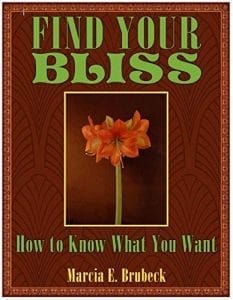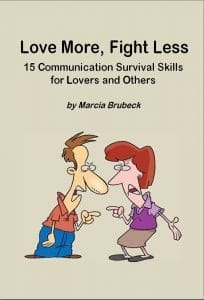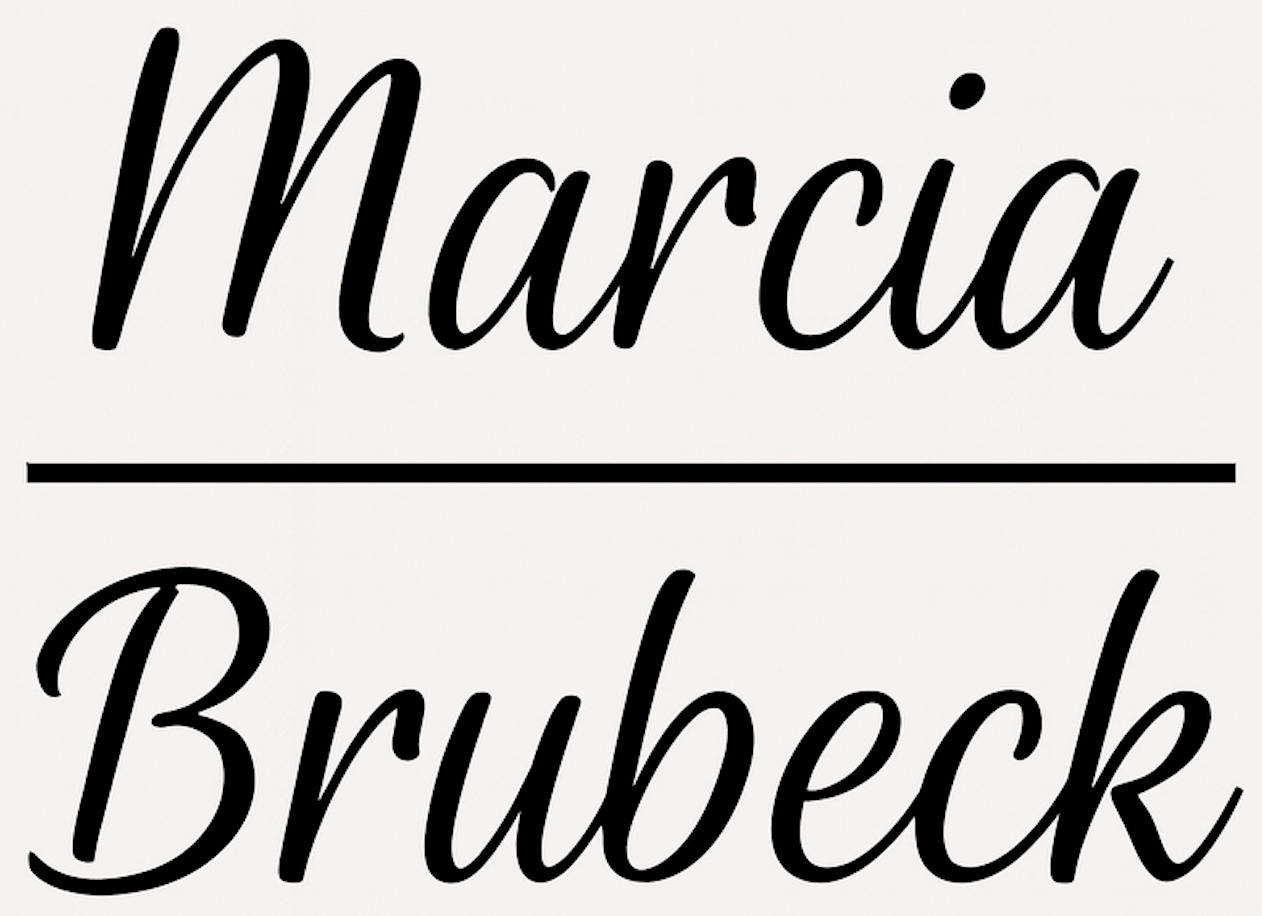
Game Changers for Parents and Grandparents, Aunts and Uncles
Sick and tired of computer games that isolate kids in cyberspace while keeping their eyes riveted on the monitor? Board and card games, better for young brains and bodies, are also great ways of having fun while building social awareness, fine motor skills, and problem-solving abilities.
In my last post I spoke of games for grownups. In this one, I invite you to consider challenges for young minds. Each one offers a fantasy universe governed by a few principles. Master them, and you win. As you will see, some of these games are good for grownups, too. We are going beyond the roll of the dice!
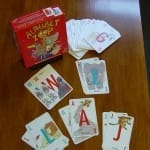
Alphabet Zoop
The deck is a zoo of lighthearted animal cards, two for each letter. Each card shows a creature with an appropriate name doing something that starts with the featured letter. (A unicorn, for instance, sports an umbrella.) The deck comes with instructions for some familiar games and tips for inventing new ones. If you spread out all the cards face down and make a game of finding pairs, you’ll discover that kids can remember where cards are better than grownups can.
The Amazing Labyrinth
The board is divided into squares, some of them glued in place and some removable, each displaying a straight section or a corner of the labyrinth’s path. Many squares show emblems—a ghost, a treasure chest, a dragon, and so forth. Once all the removable squares have been laid down to complete the board, players take turns inserting one square (and pushing another one off the board) to make a path to their target emblem. The first player to reach all emblems and return to home base wins.
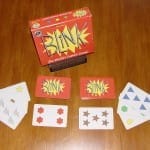
Blink
The deck is divided evenly between the two players. Playing simultaneously, they each try to be the first to get rid of their cards by placing a card on one just played that has the same shape, color, or number. This game can be played in two minutes or less.
Batik
This astonishingly simple game consists of two panes of clear plastic held erect with half an inch of space between them. The two players each take turns placing pieces of flat wood cut in different shapes. The object is to fit all of your pieces in the space and keep your opponent from doing so. The first person to drop a piece that sticks up over the top edge of the plastic walls loses the game.
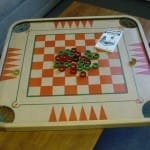
Carroms
In this traditional form of tabletop pool well over a hundred years old and playable in about a hundred different ways, my favorite game involves flicking colored wooden rings into the corner pockets using a shooter ring.
Connect Four
Once played by seamen using a chest with a slotted lid, this game has players take turns dropping a checker into a chute (column). The winner is the first to make a row of four vertically, horizontally, or diagonally.
Continuo
Cardboard squares each display a grid of smaller colored squares. Each player must take one cardboard square and place it face up mosaic style so that it touches at least one side of one card already on the board. You earn points depending on how many chains of color you match on your turn. Each chain of color must include squares from the new card and at least one square on the board. When the pieces have all been played, the person with the most points wins.
Double Digits 24 Game
Each square card bears four numbers. The challenge is to use each number and end up with the number 24. Addition, subtraction, multiplication, and division are all permissible ways of using a number. The cards have puzzles on both sides, and the puzzles are graded in three levels of difficulty. A tip sheet, supplied, explains the math principles involved.
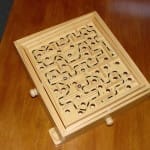
Labyrinth
The labyrinth is a box with a tilting top bearing a maze with some fences and drilled with holes along the maze. Using buttons on two sides of the box, you tilt the surface to pilot a small steel ball through the maze without letting it drop through any of the holes. This is an exercise in hand-eye coordination, also frustration tolerance.
Gnip Gnop
The board is a plastic box with a lid that lifts at each end, attaching to the base in the middle. Each player has a set of colored Ping-Pong balls, each resting on a springboard. The object is to whack the springboard and send all your balls into your opponent’s half of the box. The first player with no balls left wins.
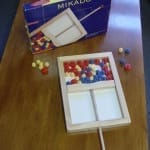
Mikado
A wooden box has a spring-mounted partition that holds red, blue, and yellow wooden discs in place. Players compete to see who can remove discs worth the most points before the partition shifts.
Outburst
You need a master of ceremonies and two players or two teams. The emcee picks a topic card. The teams attempt to guess all target words in the list that is printed on the back of the topic card. Players are supposed to accept the printed list as definitive, but emcees may want to bend the rules, since the list omits many reasonable possibilities.
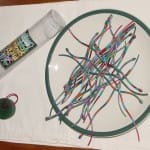
Pickup Snakes
Gather the snakes in one fist, then drop them in a heap on a flat surface (a rug or carpet works best). The winner is the person who removes the most snakes, one at a time, without making the rest of the pile move. The snakes, being sinuous, are somewhat harder to pick up than traditional straight pickup sticks would be. Since no one can focus on one snake and the whole pile simultaneously, the game develops trust: you have to take your opponent’s word for it that the pile shifted.
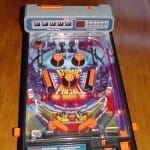
Pinball
Several small, battery-operated versions of the popular arcade game have remarkably satisfying lights, sounds, and action. The picture shows my favorite, Atomic Pinball. This game makes small kids feel like superstars as they rack up staggering numbers of points.
Shoot the Moon
This game consists of a long board with two rods, anchored at one end, that slope uphill. The board is drilled with holes from the bottom of the hill to the top. The object is to move the rods apart and together in such a way that a heavy steel ball placed on them at the bottom drops into a hole as near the top of the hill as possible. The farther apart you spread the rods, the greater the ball’s momentum, but if the rods are too far apart, the ball will drop into a low-scoring pocket.
Shut the Box
In this traditional pub game, wooden keys labeled 1 – 12 stand along one side of a shallow box with a felt-covered floor. One player rolls two dice on the felt, presses down keys in any combination equaling the value of the dice, and keeps rolling until keys can no longer be pressed down. The next player then tries. The lowest-scoring player wins the round.
Slamwich
This fast-paced, hilarious game has cards that show sandwich ingredients. The deck is divided evenly across two to six players. Without looking at their cards, players take turns playing a card. Tricks are taken when a player spots a double decker or a slamwich and slaps the pile appropriately. When a “thief” card is played, the trick is taken by the first person to slap the card and call out “Stop, thief!” “Muncher” cards require players to put down more than one card on their turn. The player who gets all of the cards wins.
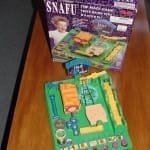
Snafu
You twist or punch buttons to maneuver a steel ball through an elaborate and colorful plastic labyrinth. The different challenges call for manual dexterity and some thought. Practice makes perfect, and there’s a timer for those who want to master the maze at top speed.
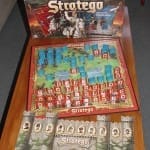
Stratego
Two players set up competing armies on opposing halves of the board. Each plants a well-defended flag within the ranks. Players then take turns advancing soldiers to find their opponent’s flag. Soldiers bearing higher numbers defeat those with lower numbers, thinning the troops on the board. The game is over when a flag has been captured.
Topple
The plastic platform with concentric rows balances on a pointed stem. Players stack colored checkers on the board to create rows worth points. The player with the most points wins when the board topples wins the game.

